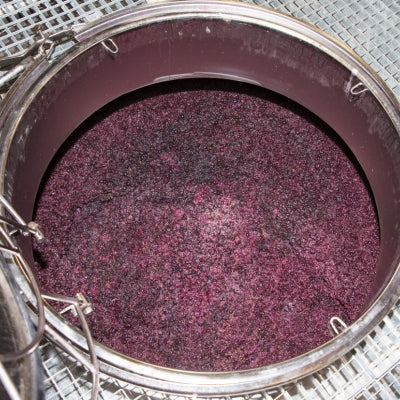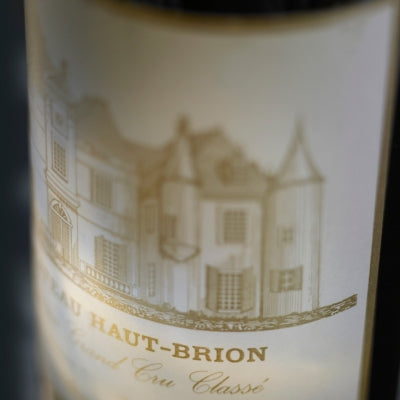
Introduction to wine faults: Part I
Wine may be celebrated for its finesse, but it is not immune to faults that can compromise quality and enjoyment. In Part I of our new series, Westgarth Wines expert Maurizio Broggi introduces the key faults — oxidation, cork taint, and volatile acidity — and explains why they matter.
Understanding wine faults
Wine, as a product of both nature and human expertise, is prone to spoilage and faults that can diminish its sensory quality and commercial value. These faults are undesirable characteristics that may arise from chemical, microbial, or physical issues during production, storage, or aging. While many factors contribute to their development, most can be traced to oxygen management, winery hygiene, microbial activity, and packaging. It is also worth noting that personal preference and cultural background often influence what some drinkers perceive as a wine ‘fault.’ Winemakers, however, adopt a more precise definition, regarding faults as departures from an accepted standard.
Oxidation
Oxygen is one of the key paradoxes in winemaking: it can be beneficial in small, controlled amounts, but harmful when exposure is excessive or poorly timed. In red wines, measured oxygen during fermentation supports yeast activity and promotes greater color stability. If mismanaged, however, oxygen can quickly compromise freshness and lead to premature spoilage. Often, the most significant risk of oxygen damage arises at bottling, where excessive oxygen pickup can compromise quality and long-term stability. Furthermore, temperature plays a role, as oxygen is more soluble in wine at colder conditions.
The oxidation of ethanol produces acetaldehyde, which gives bruised apple and nutty notes. Overall, oxidation tends to diminish fruit expression, shifting wines toward predominantly a savory, nutty, and spicy aromatic profile. This often may occur in tandem with other faults such as volatile acidity or Brettanomyces.
Interestingly, oxygen itself is not highly reactive, but in the presence of oxidation catalysts such as copper and iron, it readily reacts with phenolic compounds in grape juice or wine, triggering a cascade of oxidative processes. Naturally occurring enzymes in grapes can further accelerate these reactions, leading to effects such as browning when juice is exposed to air—much like what happens to a cut apple. The paradox of phenolics is that they both promote and prevent oxidation. In white wines, where phenolic content is relatively low, oxygen exposure can quickly overwhelm the wine, leaving it more vulnerable because there are fewer phenolics to act as a buffer. This is why, in white winemaking — where a delicate, fruit-forward profile is desired — winemakers typically limit phenolic extraction through gentle pressing and minimal skin contact, and add sulfur dioxide early to protect from oxygen. By contrast, red wines (and skin-contact whites) contain higher levels of phenolics that act as antioxidants, scavenging oxygen, slowing oxidative reactions, and giving these wines a much greater capacity to absorb oxygen without developing faults.
Sulfur dioxide (SO₂) remains the most reliable tool against oxidation. Contrary to common belief, SO₂ does not neutralize oxygen directly; instead, it inhibits oxidation by binding to key intermediates in the process. Ascorbic acid (vitamin C) can offer additional protection, but because it generates hydrogen peroxide—a powerful oxidizing agent—it must always be used in conjunction with sulfur dioxide to be effective.
Musty and cork taint
Among the most recognizable wine faults, musty aromas and cork taint remain both frustrating and costly for winemakers and consumers alike. These defects are primarily linked to microbial contamination of cork or the winery environment, with their characteristic compounds being metabolic by-products of fungi that occur naturally in cork bark. While a variety of compounds can impart musty characters, the anisole compound TCA (2,4,6-trichloroanisole) is the most prominent.
TCA is formed when natural compounds in cork come into contact with chlorine-based substances. Over time, fungi can transform these into TCA, which causes cork taint in wine. Historically, the widespread use of chlorine-containing bleaches in cork production was blamed for the occurrence of cork taint. Although chlorine is no longer used, the problem persists, in part due to contamination by chlorine residues in the environment. Once a wine is contaminated with TCA, there is no practical way to remove it. The sensory threshold for this compound is remarkably low, though individual sensitivity varies. Most people can detect it at around 5 ppt (parts per trillion… a drop of water in an Olympic swimming pool!), some as little as 2 ppt, while others may not recognize it even above 10 ppt. Wine style also plays a role: TCA is easier to perceive in delicate, aromatic whites than in full-bodied, oak-aged reds, where fruit concentration, tertiary complexity, and oak influence can partially mask the fault.
The impact of cork taint in the wine industry has been considerable. It was reported that up until 2013, between 2 to 5% of wines sealed with cork closures were affected by musty taint. Thanks to improved processing and technology in the cork industry, this figure has now fallen dramatically to around 0.3–0.5%. Typically, nowadays, efforts to combat cork taint follow two complementary approaches: preventing contaminated corks from being used and removing TCA from cork material through washing or extraction methods such as supercritical CO₂ extraction. Advances in quality control, including the use of gas chromatography, allow cork producers to screen closures for TCA at extremely low levels before they leave the factory.
While TCA attracts most of the attention, other anisoles can also cause musty taints. TBA, for example, is particularly concerning, as it often originates not from cork but from packaging and structural materials present in the winery — such as wood pallets, rafters, barrels, cardboard boxes, and hoses — and can lead to widespread contamination throughout the facility.
Volatile acidity
Volatile acidity (VA) refers to the portion of a wine’s acidity that is volatile and perceptible by smell, and it is primarily composed of acetic acid. Acetic acid gives wine its characteristic sharp, vinegary aroma and taste, with a sensory threshold around 0.6–0.9 g/L; concentrations above 1.1–1.2 g/L are generally considered unpleasant and regarded as a fault. In addition to acetic acid, a key contributor to the aroma of VA is ethyl acetate, an ester formed when acetic acid reacts with ethanol. Even at relatively low concentrations, ethyl acetate can have a pronounced impact on the wine’s bouquet, often amplifying the perception of volatility and contributing the familiar “nail polish remover” note.
Perception of VA depends not only on concentration but also on wine style and individual sensitivity. For example, wines with VA around 1.5 g/L display a noticeable vinegary edge, while lower levels can sometimes add subtle complexity, described as a “lifted” nose. Indeed, low levels of VA can be beneficial in certain wines such as rich, tannic, barrel-aged reds that tolerate modest acetic acid concentrations which enhance their aromatic profile. Similarly, in sweet botrytized wines such as Sauternes, VA contributes to style and complexity. In contrast, VA is generally less appreciated in most white wines and light, fruity red wines.
Most wine-producing countries have regulatory limits for VA, though these vary by region. For example, the European Union sets maximum levels at 1.2 g/L for reds and 1.08 g/L for whites and rosés. The legal maximum in Australian wines is 1.5 g/L, while the United States permits 1.4 g/L for reds and 1.2 g/L for whites.
Proper winemaking and careful attention to hygiene throughout the cellar typically result in acetic acid levels of around 0.3–0.5 g/L, below the sensory threshold. The production of VA is largely driven by microbial activity in the presence of oxygen. While acetic acid is produced during alcoholic fermentation, malolactic conversion, and by spoilage microorganisms such as lactic acid bacteria, Brettanomyces, and wild yeasts, it is the activity of acetic acid bacteria that usually accounts for the highest levels of VA. Acetic acid bacteria are aerobic, they thrive and convert ethanol into acetic acid in the presence of oxygen. Even with the addition of sulfur dioxide and careful control of oxygen exposure, acetic acid bacteria remain viable and can resume activity when conditions become favorable. Increased exposure to oxygen, such as during racking, topping, or poor barrel management, can stimulate acetic acid bacteria and lead to higher VA levels. It is also worth noting that a significant portion of the VA in finished wines may originate from the grapes themselves, especially if they are damaged or affected by botrytis.
Preventing VA requires careful vineyard and cellar management. Strategies include selecting healthy fruit, maintaining a clean environment, controlling temperature, pH, and acidity, protecting wine from oxygen and adding appropriate levels of sulfur dioxide. Barrel-aged wines present particular challenges, as controlled oxygen exposure is essential for wine development; consequently, keeping oak vessels full through topping up and monitoring SO₂ is critical.
If VA exceeds acceptable levels, remediation options are limited. Severely affected barrels or tanks may need to be discarded. In some cases, blending with other wines to dilute VA or treating the affected wine with reverse osmosis can be attempted, although these measures will alter the wine’s character.
Ready for more insights into wine faults? Keep an eye open for Introduction to wine faults: Part II where Brett, reduction, mousiness, light strike, and smoke taint are in focus.
Want to read more? Take a look at some of our other blogs:
Also in News

Weingut Egon Müller–Scharzhof: Master of Saar Riesling
Some of the world’s most elegant and expressive Riesling wines


